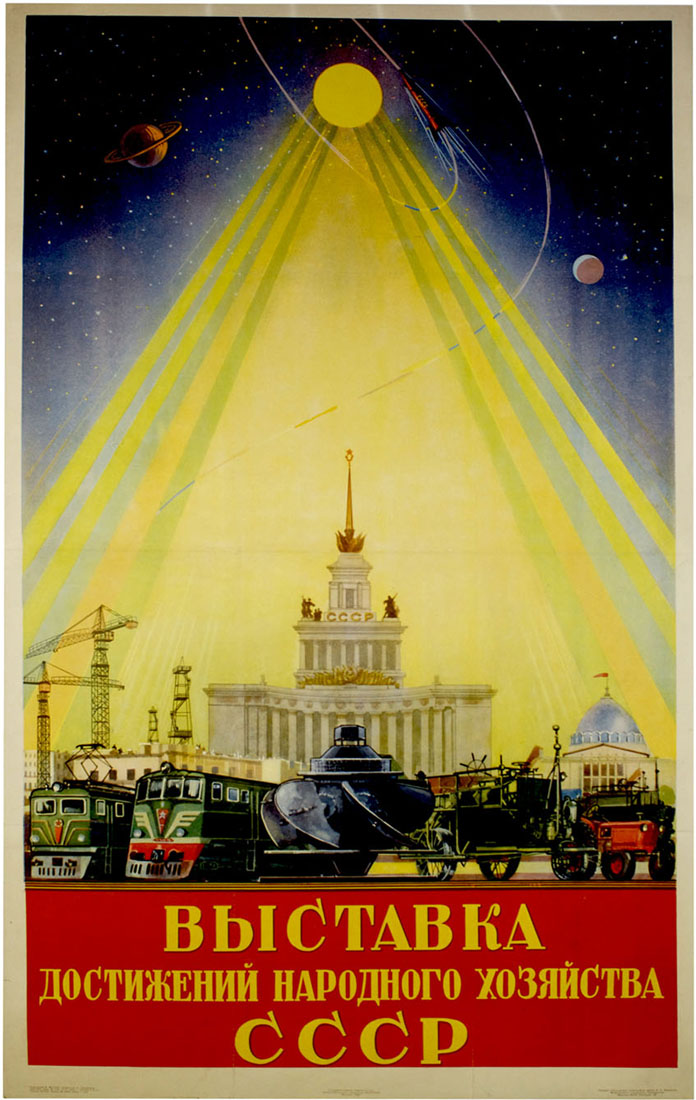
Exhibit of achievements in the national economy of the USSR
Poster Number: PP 097
Category: Economy
Poster Notes: In 1959 the grounds of the 1930s-designed All-Union Agricultural Exhibition (VSKhV) were renamed the Exhibition of Achievements of the National Economy (VDNKh). From 1991 to 2014 the exhibition grounds were called the All-Russia Exhibition Center (VVC) but in 2014 the VDNKh acronym was restored.
Media Size: 48x31
Poster Type: Lithograph and Offset
Publishing Date: 1959
Editorial Information: Editor A. Pashenkov
Technical Information on Poster: [Approved for printing] March 17, 1959; Publication No.1- 63; Volume 1 sheet of paper; Order No. 2924; Price 1 ruble
Print Run: 75,000
Glavlit Directory Number: Sh01253
Sources & Citation: Magnúsdóttir, R. (2019). Enemy Number One: The United States of America in Soviet ideology and propaganda, 1945-1959. New York: Oxford Univ. Press.
Catalog Notes: PP 097 Economy
Artist: Mukhin, Boris Aleksandrovich — Мухин, Борис Александрович
Printer: 1st Exemplary Typography Workshop named for A. A. Zhdanov, Moscow — 1-я Образцовая типография им. А.А. Жданова
The 1st Exemplary Typography Workshop was named in honor of Andrei Alexandrovich Zhdanov (1896-1948), a Soviet military leader and a senior member of the Politburo who died in 1948. Reportedly, Andrei Zhdanov controlled the atomic espionage division of the USSR and he was Josef Stalin's closest confidant. Historically, the 1st Exemplary Typography Workshop began as the Sharapov-Sytin Partnerhip, a printing workshop formed before the Russian Revolution. Ivan Dmitrievich Sytin (1851-1934) was the son of a peasant. ...
Read More About This Printer
Publisher: IzoGiz (State Publishing House of Fine Art), Moscow — Изогиз (Государственное издательство изобразительного искусства), Москва
The history of IzoGiz begins with the formation of Ogiz, the Association of the State Book and Magazine Publishers. In 1930, the Sovnarkom of the Russian Socialist Federative Soviet Republic established Ogiz to centralize publishing under a monopoly in order to eliminate duplication of printed material, to streamline and control publishing production and its output, and to create a base for marketing books, training and technical manuals. In 1931, the Central Committee of the USSR ordered certain ...
Read More About This Publisher